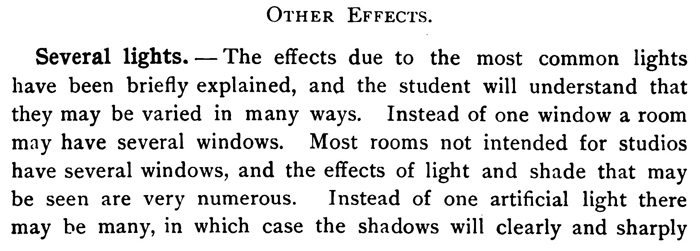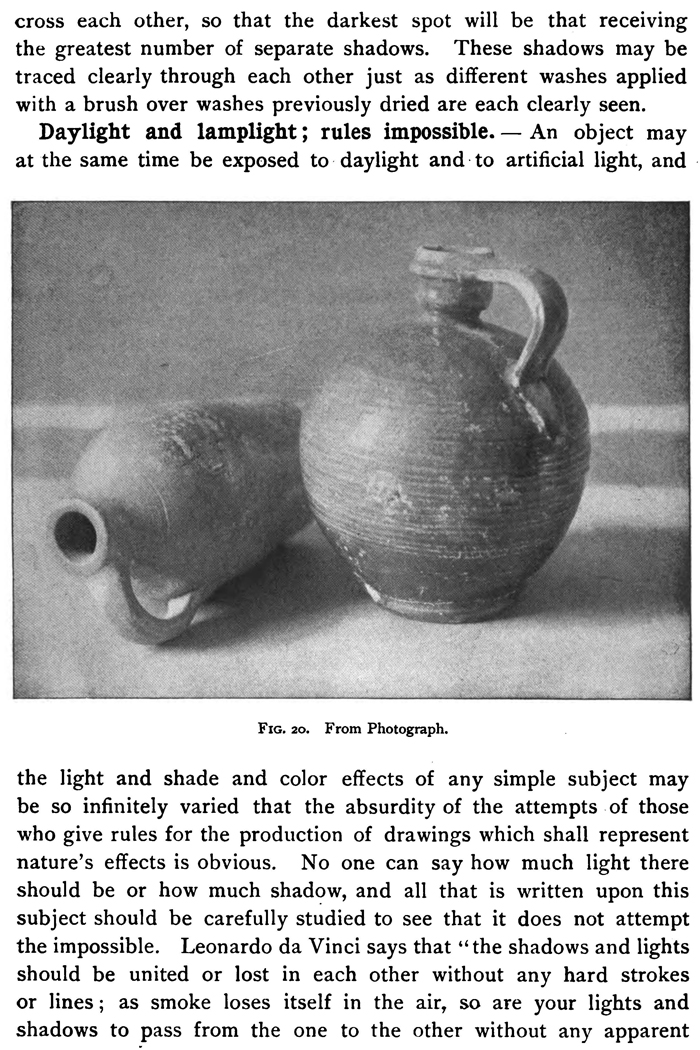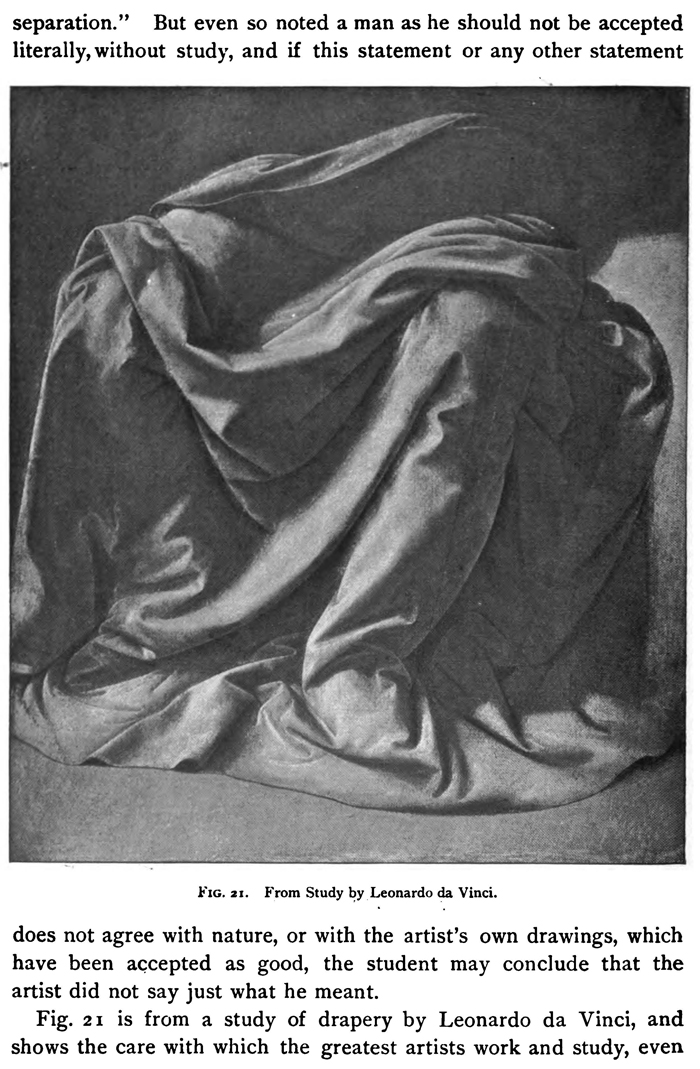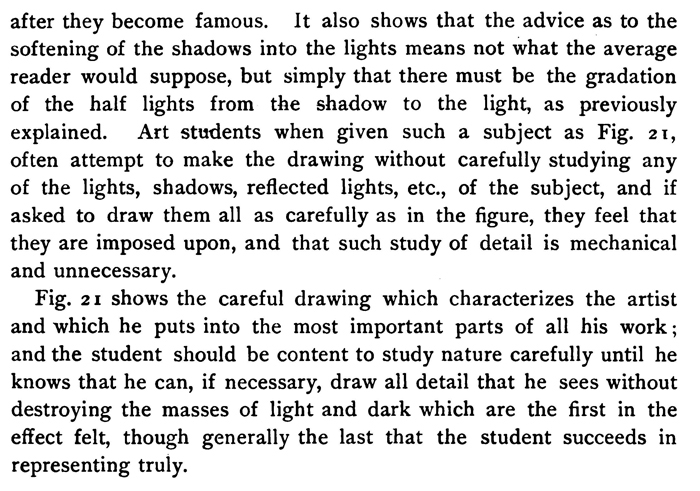Home > Directory of Drawing Lessons > Improving Your Drawings > Lights and Shadows > Lines
Lighting Effects - When More Than One Lighting Source is Present
|
|
Lighting Effects - When More Than One Lighting Source is Present
OTHER EFFECTS.Several lights.The effects due to the most common lights have been briefly explained, and the student will understand that they may be varied in many ways. Instead of one window a room may have several windows. Most rooms not intended for studios have several windows, and the effects of light and shade that may be seen are very numerous. Instead of one artificial light there may be many, in which case the shadows will clearly and sharply cross each other, so that the darkest spot will be that receiving the greatest number of separate shadows. These shadows may be traced clearly through each other just as different washes applied with a brush over washes previously dried are each clearly seen. Daylight and lamplight; rules impossible.An object may at the same time be exposed to daylight and to artificial light, and the light and shade and color effects of any simple subject may be so infinitely varied that the absurdity of the attempts of those who give rules for the production of drawings which shall represent nature's effects is obvious. No one can say how much light there should be or how much shadow, and all that is written upon this subject should be carefully studied to see that it does not attempt the impossible. Leonardo da Vinci says that "the shadows and lights should be united or lost in each other without any hard strokes or lines ; as smoke loses itself in the air, so are your lights and shadows to pass from the one to the other without any apparent separation." But even so noted a man as he should not be accepted literally,without study, and if this statement or any other statement does not agree with nature, or with the artist's own drawings, which have been accepted as good, the student may conclude that the artist did not say just what he meant. Fig. 21 is from a study of drapery by Leonardo da Vinci, and shows the care with which the greatest artists work and study, even after they become famous. It also shows that the advice as to the softening of the shadows into the lights means not what the average reader would suppose, but simply that there must be the gradation of the half lights from the shadow to the light, as previously explained. Art students when given such a subject as Fig. 21, often attempt to make the drawing without carefully studying any of the lights, shadows, reflected lights, etc., of the subject, and if asked to draw them all as carefully as in the figure, they feel that they are imposed upon, and that such study of detail is mechanical and unnecessary. Fig. 21 shows the careful drawing which characterizes the artist and which he puts into the most important parts of all his work ; and the student should be content to study nature carefully until he knows that he can, if necessary, draw all detail that he sees without destroying the masses of light and dark which are the first in the effect felt, though generally the last that the student succeeds in representing truly. |
Privacy Policy ...... Contact Us








